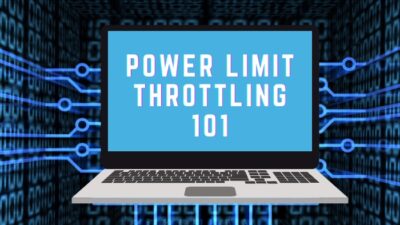Each day, about 333.2 billion emails are sent worldwide; of them, 85% are spam emails. When Google detects a spam email, it marks it as dangerous and warns us with the This Message Seems Dangerous message.
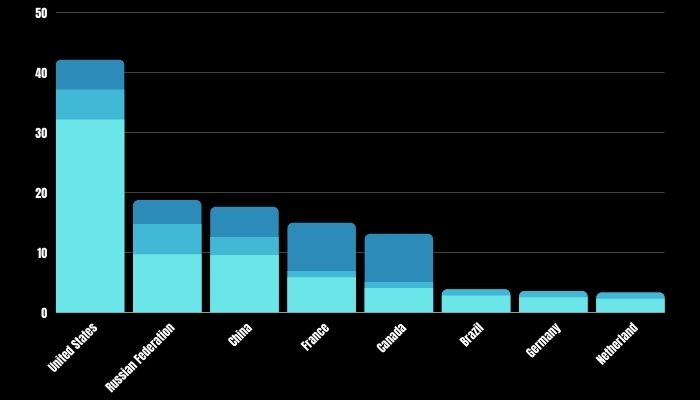
Unfortunately, Google’s spam detection system is not that good. They only block about 100 million spam emails out of 283 billion daily. And sometimes Google red flags emails that are legitimate.
So you see, we clearly cannot rely only on Google to filter out spam emails. You need to know precisely how to identify phishing emails.
In this article, I’ve described which are harmful emails and which are not and what to do when Gmail marks an email as dangerous.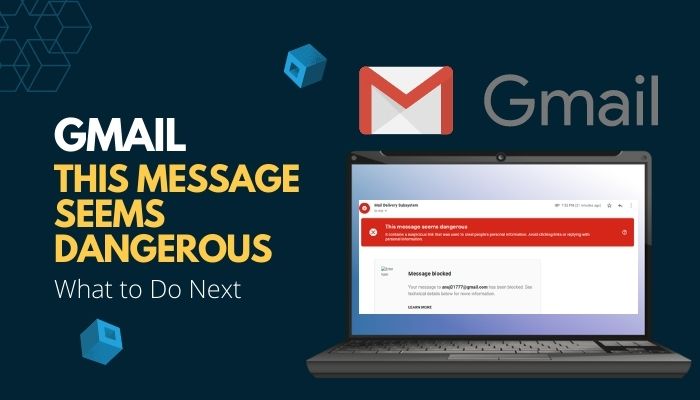
Also, check out our separate post on how to show/hide folders on left menu on Gmail.
How Can You Tell a Dangerous Email?
To specify dangerous emails, you need to check the senders’ information and check if you are being asked for your personal information. An unsafe email may have malicious attachments or suspicious links that will install malware when you click on them.
Before, we could tell if someone was trying to scam you by the grammar they used in their emails, but now the scammers are evolving. Still, there are ways to identify malicious emails.
Here’s how to identify a suspicious email:
Weird Sender Information
Scammers usually disguise themselves as though they are from authorized banks or reputed companies. But as they cannot use the official address or site, they use sites and addresses that look similar.
Make sure to check where the email is from properly.
Don’t Know Anything About You
Scammers are often impersonal. They won’t know your name and will refer to you as sir, madam, or user. On the other hand, a real company whose service you are using would know your name and additional information.
Asks for Personal Information
In a phishing email, the scammers will pose like they are from reputed agencies and ask for your account information, credit card number, password, or any other private data.
Never provide this information to anyone. No employees from banks or anyone from actual companies ask for your private information.
Destructive Attachments
Most of the time, harmful emails will have malicious files attached to them in .doc, .pdf, .zip, or .rar format. If you download and open them, these files have viruses and malware that will attack your computer. 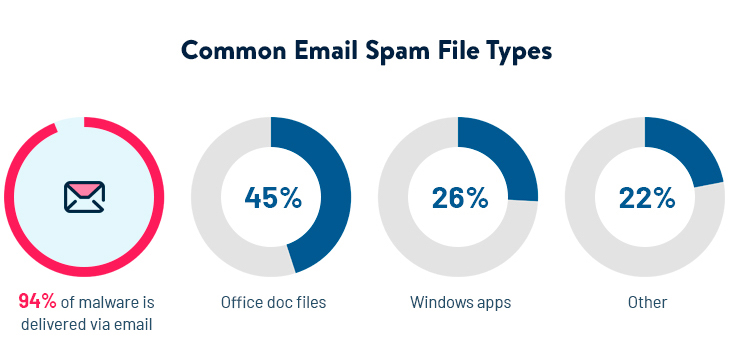
Shady Links
Along with viruses, harmful emails can also have deceptive links to pages that will tell you to install malware disguised as legitimate apps. Do not click on links that are from unknown emails.
These are the points you should consider when determining dangerous emails.
Follow our guide on how to fix address not found error in Gmail.
How Do I Fix This Message is Dangerous on Gmail?
When Gmail detects a malicious email, it shows a red banner that says This message seems dangerous. But Googles’ spam detection system doesn’t work correctly and can sometimes mark emails as dangerous that are legitimate and important to you.
To fix the emails marked dangerous, sort your emails by unsubscribing from the services you don’t use, click on Looks safe on the warning only if you are 100% sure the message is legit; try disabling the antivirus email signature and scan your emails.
Here’s what to do if Gmail says this message is dangerous:
1. Select Looks Safe
In case you are totally sure that the email is not dangerous because it is from someone you actually know and if the email has no hidden links, click no Looks safe on the red flag. 
Google will update this information and no longer flag those kinds of emails.
2. Organize Your Emails
You need to arrange your emails if your messages are marked as dangerous.
Here’s how to organize your email that’s not marked it dangerous:
- Make sure to give a Subject to the emails.
- Reduce the number of images from your email.
- Decrease the number of links. Remove all links if possible.
- Don’t attach too many files.
- Include the unsubscribe option in your emails.
- Don’t make any grammatical errors.
Follow these instructions to avoid getting red flagged by Gmail.
Check out the easiest way to transfer contacts to Gmail accounts.
3. Disable the Antivirus Email Signature
Some antiviruses have the digital signature feature that scans your email. But it can cause Gmail to falsely determine certain emails as dangerous.
Disable the digital signature and see whether the problem is solved or not.
4. Scan Your Device
In case you’ve clicked on a link or downloaded a file from an email marked as dangerous, you should do a full scan of your PC.
Here are the steps to scan a Windows PC:
- Select Windows Security from Taskbar hidden icons.
- Go to Virus & threat protection > Scan options.
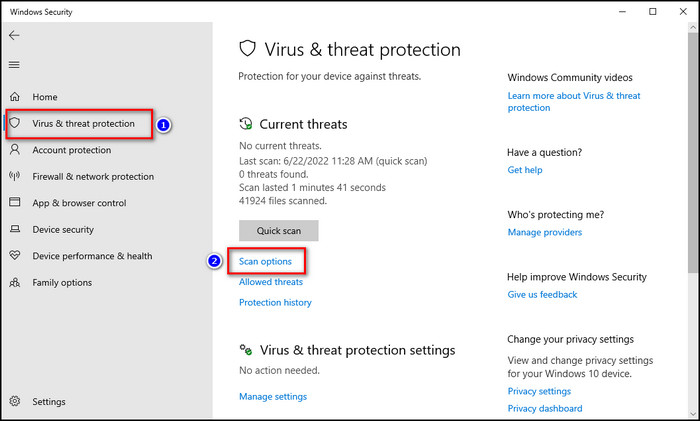
- Choose Full scan and click Scan now.
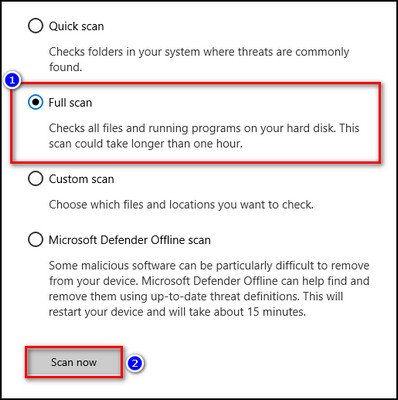
After the scan is complete, remove any virus that’s found.
Also, check out our separate post on how to view message headers in Outlook.
5. Forward Email to Yourself
If Gmail wrongfully marked an email as dangerous, you might not be able to open it even though you know that email is harmless.
Although there’s no fix to this problem, there is a workaround. Just forward the email to yourself. It will allow you to open the email and download the attached files.
6. Report as Spam and Remove from Spam
This is another approach to safelist emails that Gmail has falsely accused of being dangerous.
Here’s how to add & remove email to spam to make senders’ email address safe:
- Open the email that Google incorrectly labeled dangerous.
- Click Move to and select Spam.
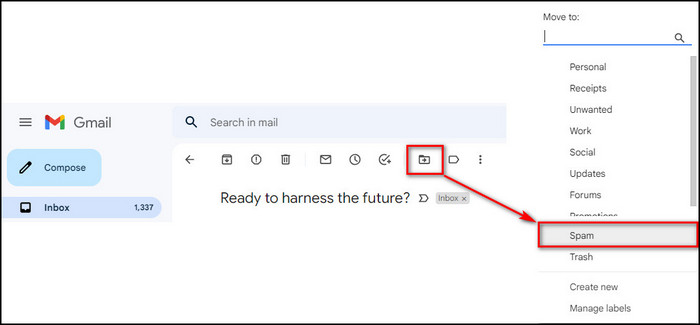
- Open the Spam folder.
- Select the email and choose Report not spam.

From now on, the senders’ emails won’t be red flagged. Remember, this might not work for some users.
Check out the easiest way to enable read receipts in Outlook.
7. Select Email to Never Send to Spam
If Gmail has selected an email as harmful when it is not, you can put the email in the Never send to spam filter, so any future emails from that address are marked as damaging.
Here’s how to create never send to spam filter:
- Open the email that Gmail mistakenly tagged dangerous.
- Click the 3 dots and select Filter messages like this.

- Ensure the senders’ email address is visible and risk-free.
- Select Create filter.
- Choose Never send it to Spam and click Create filter.
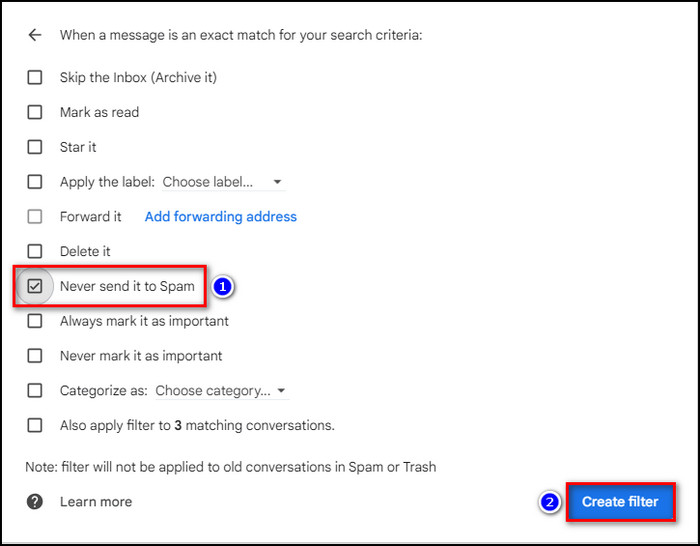
After these steps, Gmail won’t see the senders’ email address as malicious anymore.
FAQs
Why does it say be careful with this message Gmail?
It says, Be careful with this message on a particular email because Gmail thinks that the email is malicious.
Can opening an email in Gmail be dangerous?
No, opening an email in Gmail is not dangerous. But clicking on unknown links or downloading and opening files attached to malicious emails is dangerous.
Does Gmail block malicious attachments?
When Gmail detects malware or malicious attachments in an email, it blocks the attachments and marks the email as dangerous.
Final Thoughts
Google does many things right but sadly, filtering out spam emails is not one of them. While Gmail can detect malicious emails pretty well, it sometimes marks harmless and essential emails as dangerous, which can have disastrous consequences.
But no need to worry about it now. Here, I’ve explained how you can identify malicious emails and what to do when you get the message being a dangerous alert from Gmail.
Tell me below if you’ve ever received any emails from scammers. Also, let me know if you’ve any questions regarding phishing or malware attacks.
See you in the comment section.


